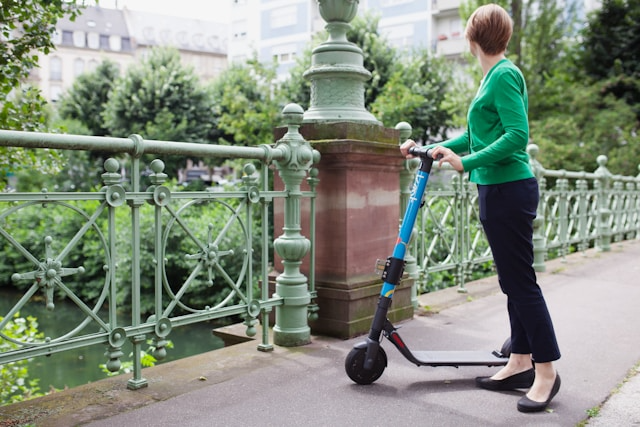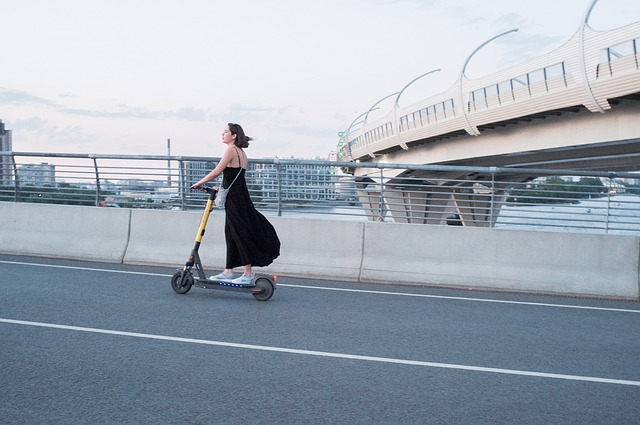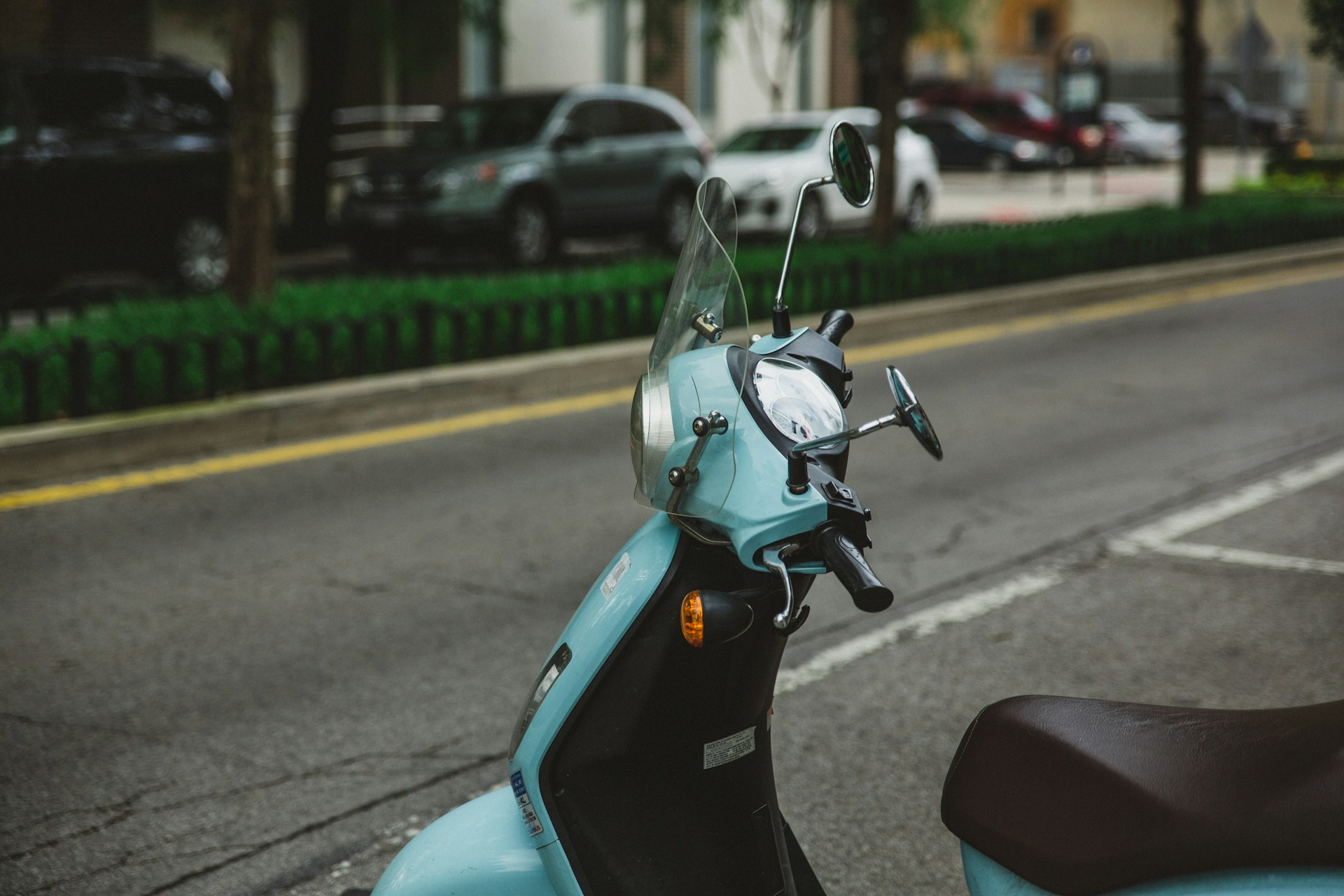Zipping around the roads of Hawaii is something that everyone looks forward to. Wandering Hawaii for a long time, and scooters are my absolute favorite for maneuvering the island. They are quick, compact, easy to ride, and let you explore the hidden gems that are usually overlooked by many.
But, to ride these vehicles comfortably, we do need to consider their weight so you have a comfortable experience throughout. Scooters have become a popular mode of transportation for many. These come in many types and each has a different purpose.
Whether you’re looking to buy one or rent one, there’s always one common question that comes into every professional rider’s mind, “How much does a scooter weigh?” While the answer is not straightforward, we will make things easier for you!
The weight of the scooter depends on many factors such as its type, design, and use. In this blog, we’ll look at the various categories of scooters available, their weight ranges, factors that influence their weight, and why it’s important to look at the weight.
So, let’s dive in to know more about the vehicles you’ll ride to discover the natural beauty of Waikiki or Hawaii as a whole!
Types Of Scooters
When we’re talking about scooters, there’s not just one kind but they are categorized under various types. These can be broadly categorized into three main types: mobility scooters, electric scooters, and moped scooters. Each type serves different purposes and has varying weight characteristics.
1. Mobility Scooters

Mobility scooters are mainly designed for those who have mobility problems. Mobility scooters fall under various subcategories, which are:
Lightweight Mobility Scooters: Lightweight mobility scooters are ideal for easy transport. A typical mobility scooter weighs between 70 and 100 lb (32 to 45 kg). Several folding mobility scooters weigh only about 35 lb (16 kg).
Mid-Weight Mobility Scooters: These strike a good balance between portability and many more features. Mobility scooters weigh between 100 and 150 lb (45 to 68 kg) under this category.
Heavy-Duty Mobility Scooters: Built for outdoor usage with rugged features, they weigh over 150 lb (68 kg) and in some cases can weigh up to approximately 400 lb (181 kg) or more. They are fitted with luxury finishing touches and made more stable.
2. Electric Scooters

Electric scooters are a regular mode of transport for commuters and leisure use. The model greatly influences the vehicle’s weight range:
Kick scooters: These are lightweight electric scooters designed mainly for kids. These electric scooters weigh less than 20 pounds (9 kg), hence, are lightweight scooters.
Commuter scooters: Commuter scooter is made purely to provide a practical and efficient means of transport. They are portable scooters and have just the right comfort and stability. The average weight of these scooters ranges between 15 to 25 pounds (7 to 11 kg).
Heavy-duty electric scooters: These are made for heavy-duty performance and can weigh between 40 to well above 70 pounds (18-32 kg) based on motor power and battery capacity.
3. Moped Scooter
Moped scooters are usually two-wheeled or three-wheel scooters. They show many common features with a bike or scooter. They are equipped with engines ranging from 49cc to 250cc. They reach top speeds higher than 60 or 70 mph due to having powerful motors.
A moped’s weight difference depends on the engine size, frame material, and add-on features or accessories. On average, they may weigh from 150 to 250 pounds.
Factors Influencing Scooter Weight

Several factors contribute to the overall weight of a scooter:
1. Construction Materials
Materials used to construct a scooter can greatly affect its weight. Lightweight materials, such as aluminum or other high-strength plastics, are used in portable models.
In contrast, heavy-duty scooters usually have steel frames and thicker components to add more strength, which in turn increases the overall weight.
2. Battery Type and Capacity
The kind of battery used is also regarded as a main point in deciding the weight of the scooter. It is known that heavier batteries which are designed for higher power issues take more weight to the vehicle, for example, lithium-ion batteries are heavier compared to lead-acid batteries, which are the older technology.
That is also one of the reasons why the recent scooter models may look light but in fact, they are still running on the same efficient level.
3. Design Features
Added components such as suspension systems, bigger wheels, and advanced control systems are also likely to be behind the higher weight that is experienced.
In particular, heavy models are usually built for off-road driving, but the luxury components are included more and more since these make machines heavier.
Weight Considerations When Purchasing A Scooter

While choosing a scooter, it is important to consider the weight of a scooter:
Easy To Transport
If you’re thinking of carrying your scooter—frequently, for example, in a lorry—lightweight is better; for this reason, folding or disassembled scooters hardly weigh. These should also be easy to throw into your car trunk when planning to transport it from one place to another.
Stability Against Weight
Heavier scooters often mean more stability and support for bigger users but may cause a lot of trouble in transportation. Your personal needs about stability versus portability are important to consider while deciding.
User Needs
Waikiki has lots of things to do on a budget and exploring the scenic spots is one such thing. Therefore, people who are weak or less mobile need to select one that is easy to lift or maneuver. Lightweight or shot-down scooters may be usable in such cases.
Why Does The Weight Of A Scooter Matter?

While most of us tend to overlook the weight of a scooter, we should understand that the scooter’s weight matters for several reasons, impacting its performance, handling, and overall user experience. Here’s why:
1. Handling and Maneuverability
First comes the ease of handling. Lightweight model scooters are also more user-friendly and easier to ride around, for example in very narrow paths or when maneuvering in traffic.
On the other hand, heavier scooters are more stable at higher speeds but very difficult to handle at low speeds or when parking.
2. Fuel Efficiency
Regarding fuel economy, assuming you own a gasoline scooter, lighter scooters are likely to consume less fuel since less power is required to move their weight.
Nevertheless, a more powerful scooter could necessitate a more powerful engine and, consequently, higher fuel consumption.
3. Top Speed and Acceleration
When talking about speed and acceleration, a lighter scooter accelerates quicker and can achieve maximum speed more economically, that is especially the case with a lower engine, for example, 50cc.
4. Load Capacity
Heavier model scooters are more likely to have a higher load and weight capacity. This means they can hold more weight (rider, passenger weight, or cargo weight) without loss of safety or performance.
5. Portability and Storage
Lightweight mobility scooters are easier to carry or lift (e.g., putting them in a truck or a small room). This is especially relevant for riders riding in the urban area or riders who move their scooter regularly. Folding scooters are a suitable alternative for this reason since the scooters are foldable and easy to transport.
6. Safety and Stability
Another aspect of scooters is the safety. Scooters that are heavy could feel more stable on the road, especially in windy conditions or at high speeds. But, their extra weight can make stopping distance longer or handling tricky for smaller riders.
7. Terrain Adaptability
If you regularly ride on hilly or uneven terrain, a lighter scooter is easier for the engine to propel upward. Heavy scooters may have a tougher time handling hills, especially if matched with a small engine.
Conclusion
Determining the differences in weight for various scooter types is necessary when deciding which kind to buy or rent. If you are thinking about both a mobility scooter for help and an electric scooter to get to work with, you should know how heavy a vehicle is and what does it to its portability, stability, and general functionality before you ride it.
Frequently Asked Questions
Are lighter scooters less durable?
Not necessarily. Scooters made from lightweight materials like aluminum or carbon fiber can be both light and durable. However, heavier scooters often use steel or reinforced materials for added strength, especially for motorized models.
Does the weight capacity of a scooter relate to its weight?
While a scooter’s weight doesn’t directly correlate to its weight capacity, sturdier and heavier scooters often support higher weight limits. Be sure to check the manufacturer’s specifications.
Do scooters with larger wheels weigh more?
Yes, scooters with larger or thicker wheels generally weigh more due to the added material in the tires and rims. However, these wheels provide a smoother ride over uneven surfaces.

